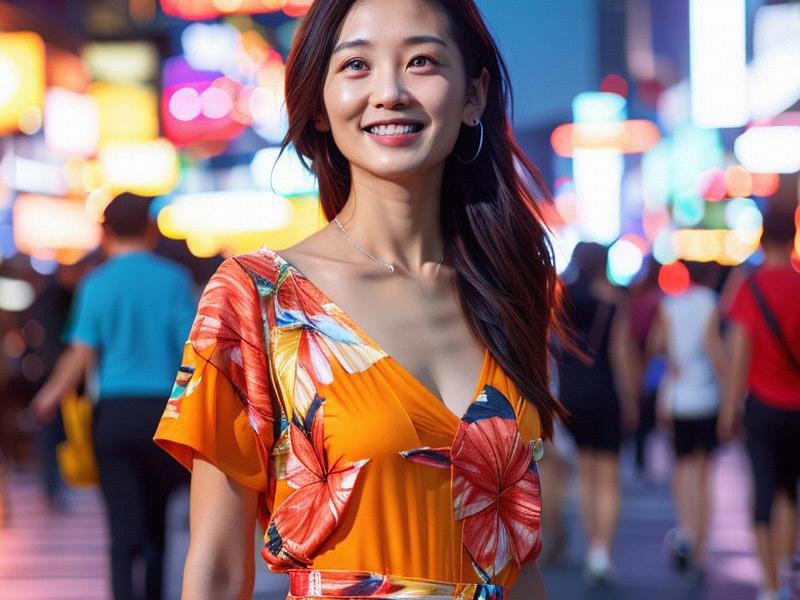This article delves into the captivating allure of Shanghai beauties, exploring their historical roots, cultural significance, and how they have evolved over time. It examines the unique blend of traditional Chinese aesthetics and Western influences that have shaped the image of Shanghai women, highlighting their elegance, sophistication, and the enduring charm that continues to captivate people worldwide.

In the heart of China's bustling metropolis, Shanghai, there exists a certain mystique that has long drawn people in. This mystique is not just about the city's towering skyscrapers, neon-lit streets, or its status as a global financial hub. It is also about the women of Shanghai—their grace, their style, and the unique blend of tradition and modernity that they embody. The allure of Shanghai beauties is a fascinating subject that offers a window into the city's rich cultural heritage and its dynamic evolution over the centuries.
To understand the allure of Shanghai beauties, one must first delve into the city's history. Shanghai's transformation from a small fishing village to a major international port in the 19th century brought with it a influx of foreign influences. This period, known as the "Shanghai International Settlement," saw the emergence of a cosmopolitan culture that was unlike anything else in China at the time. It was here that the concept of the "Shanghai belle" was born—a woman who was not only beautiful but also sophisticated, educated, and independent.
The Shanghai belle of the early 20th century was a product of this unique cultural melting pot. She was often the daughter of wealthy merchants or diplomats, and she had access to the latest European fashions, education, and social opportunities. These women were known for their elegance, their ability to navigate both Chinese and Western social circles, and their charm. They were the epitome of the "modern woman," a symbol of progress and change in a rapidly evolving society.
One of the most striking aspects of the Shanghai belle was her fashion sense. She was a trendsetter, known for her impeccable taste in clothing and accessories. Whether it was a qipao (a traditional Chinese dress) tailored in the latest Parisian style or a Western-style evening gown, the Shanghai belle always looked effortlessly chic. Her wardrobe reflected the city's cosmopolitan nature, blending traditional Chinese elements with Western fashion trends.
上海龙凤阿拉后花园
The allure of Shanghai beauties was not just about their physical appearance or their fashion sense. It was also about their intelligence, their independence, and their confidence. These women were often well-educated, fluent in multiple languages, and adept at navigating the complexities of a rapidly changing world. They were not content to be mere ornaments; they were active participants in the city's social, cultural, and political life.
As Shanghai continued to grow and evolve, so too did the image of its women. The post-World War II era saw a shift in the city's demographics and culture, as it became a center for socialist politics and industry. During this time, the image of the Shanghai belle evolved to reflect the new ideals of the era—simplicity, practicality, and dedication to the collective good. However, even in this period of change, the essence of the Shanghai beauty remained intact—a sense of grace and charm that was uniquely her own.
In the改革开放新时代 (new era of reform and opening up) (the new era of reform and opening up), Shanghai once again became a symbol of China's modernization and globalization. The city's women embraced a new wave of fashion trends, blending traditional Chinese elements with cutting-edge international styles. They became icons of elegance and sophistication, representing the best of what the city had to offer.
上海龙凤419官网
The allure of Shanghai beauties in the modern era is a testament to the city's unique cultural identity. They are a blend of old and new, tradition and modernity, East and West. They embody the spirit of Shanghai—a city that is constantly evolving, yet deeply rooted in its rich history and culture.
One of the most fascinating aspects of the modern Shanghai belle is her ability to balance tradition with modernity. She respects and values her cultural heritage, but she is not afraid to embrace change and innovation. Whether it is through her fashion choices, her career aspirations, or her personal lifestyle, she represents a harmonious blend of the old and the new.
For example, many modern Shanghai women continue to appreciate and preserve traditional Chinese arts and crafts, such as silk embroidery, calligraphy, and tea ceremonies. At the same time, they are also at the forefront of technological advancements, excelling in fields such as finance, technology, and the arts. This duality is what makes them so captivating—they are both grounded in their cultural roots and forward-thinking in their approach to life.
上海品茶网
The allure of Shanghai beauties is not just about individual women; it is also about the city as a whole. Shanghai is a city that has always been at the crossroads of cultures, a place where East meets West and tradition meets modernity. The women of Shanghai are a reflection of this unique identity, embodying the city's spirit and charm.
In conclusion, the allure of Shanghai beauties is a complex and multifaceted phenomenon. It is a story of cultural heritage and historical evolution, of fashion trends and social change, of individual women and the city they call home. The Shanghai belle is more than just a symbol of beauty; she is a symbol of grace, sophistication, and the enduring charm of Shanghai—a city that continues to captivate the world with its unique blend of tradition and modernity.
As we look to the future, the image of the Shanghai belle will undoubtedly continue to evolve. But one thing is certain: the allure of Shanghai beauties will remain a timeless and captivating aspect of the city's identity. They are a testament to the power of culture, history, and individuality to shape our perceptions and inspire our imaginations.